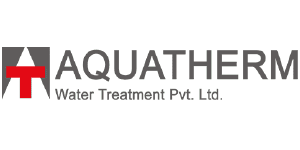 BACK TO Blog
BACK TO Blog
Acronyms from service & maintenance industry
Published On March 16, 2023 | 5 Min Read

There are many acronyms used in the maintenance industry. The people of the industry are very much conversant with these words. If you are new to the industry, then you need to google it quite a few times. Here some of the commonly used acronyms are listed with short descriptions.
What does CMMS stand for?
CMMS stands for Computerized Maintenance Management System, and it refers to software designed to help organizations manage their maintenance operations more efficiently. In simple terms, it is a system that automates and streamlines the maintenance management process.
What does EAM stand for?
The acronym EAM stands for Enterprise Asset Management. It is a software system designed to manage an organization’s assets across different departments and locations. EAM systems are used to manage all types of physical assets, including machinery, equipment, buildings, vehicles, and other assets that require maintenance.
What does IWMS stand for?
The acronym IWMS stands for Integrated Workplace Management System. It is a software platform that helps organizations manage their facilities, assets, and real estate. IWMS software integrates data and processes from multiple departments, such as finance, operations, HR, and IT, to provide a comprehensive view of an organization’s facilities and assets.
What does CAFM stand for?
CAFM stands for Computer-Aided Facility Management. It is a software system designed to help organizations manage their facilities more efficiently. CAFM software integrates data and processes from multiple departments, such as maintenance, space planning, and real estate management, to provide a comprehensive view of an organization’s facilities.
What does PMMS stand for?
The acronym PMMS stands for Plant Maintenance Management System. It is a software system designed to help organizations manage maintenance activities for their plant equipment and machinery. PMMS software is often used in manufacturing plants, power plants, and other industrial facilities.
PMMS software includes modules for work order management, preventive maintenance scheduling, asset management, and inventory management. These modules are designed to work together, allowing organizations to manage their plant maintenance activities more efficiently.
What does TPM stand for?
The acronym TPM stands for Total Productive Maintenance. It is a maintenance management approach that focuses on maximizing the productivity and effectiveness of equipment and machinery. TPM is based on the principle of involving all employees in the maintenance process to improve equipment performance, reduce downtime, and increase productivity.
TPM involves a comprehensive set of maintenance activities, including planned maintenance, predictive maintenance, and autonomous maintenance. Planned maintenance involves scheduled maintenance activities, such as cleaning, lubrication, and inspection. Predictive maintenance involves using data and analytics to predict equipment failures and plan maintenance activities accordingly. Autonomous maintenance involves empowering frontline operators to perform routine maintenance activities, such as cleaning and inspection, to improve equipment performance.
What does MRO stand for?
The acronym MRO stands for Maintenance, Repair, and Operations. It refers to the activities involved in maintaining and repairing equipment and facilities used in manufacturing and other industrial processes. MRO encompasses a wide range of activities, including maintenance, repair, spare parts management, and inventory management.
Maintenance activities typically include preventive maintenance, predictive maintenance, and corrective maintenance. Preventive maintenance involves regularly scheduled maintenance activities to prevent equipment failures and downtime. Predictive maintenance involves using data and analytics to predict equipment failures and plan maintenance activities accordingly. Corrective maintenance involves repairing equipment after a failure or breakdown has occurred.
What does RCM stand for?
The acronym RCM stands for Reliability Centered Maintenance. It is a maintenance management strategy that focuses on identifying and addressing potential equipment failures before they occur. RCM involves analyzing the functions and performance requirements of equipment, identifying potential failure modes, and determining appropriate maintenance activities to address those failures.
What does IoT stand for?
The Internet of Things (IoT) is a network of physical objects that are embedded with sensors, software, and other technologies to connect and exchange data with other devices and systems over the internet. When integrated with a Computerized Maintenance Management System (CMMS), IoT technology can provide significant benefits for maintenance management.
One of the key benefits of integrating IoT with CMMS is improved asset tracking and management. IoT sensors can be used to monitor equipment performance, track equipment location and movement, and collect data on equipment usage and wear and tear. This data can then be integrated with the CMMS, providing maintenance managers with real-time information on asset performance and usage patterns. This information can be used to optimize maintenance activities, reduce downtime, and extend the useful life of equipment.
What does KPI stand for?
The acronym KPI stands for Key Performance Indicator. KPIs are quantitative metrics to measure and track an organization’s progress towards achieving its goals and objectives. It helps in performance evaluation process across a wide range of activities, including sales, marketing, customer service, production, and maintenance.
KPIs are typically specific, measurable, and time-bound metrics that reflect important aspects of an organization’s performance. It is an important tool to track progress towards specific goals and to identify areas where performance can be improved. KPIs assists in evaluating performance at different levels of an organization, from individual employees to entire departments or business units.
Examples of KPIs in maintenance management might include metrics such as equipment uptime, mean time between failures (MTBF), mean time to repair (MTTR), and maintenance backlog. These metrics can be used to evaluate the effectiveness of maintenance strategies, identify areas for improvement, and track progress towards specific maintenance goals.
What does MTTR stand for?
The acronym MTTR stands for Mean Time To Repair or Mean Time To Recovery. It is a measure of the average time taken to restore a system or service to full functionality after it has experienced an unplanned interruption or outage. MTTR is an important metric for assessing the efficiency of a system’s maintenance and support processes. It can be calculated by dividing the total downtime by the number of incidents that occurred during that time period. A lower MTTR indicates that a system is more reliable and that it can be restored quickly in case of an unplanned interruption.
What does MTBF stand for?
The acronym MTBF stands for Mean Time Between Failures. It is a maintenance metric that measures the average time between equipment failures. MTBF is typically calculated by dividing the total operating time of a piece of equipment by the number of failures that occurred during that time.
MTBF is an important metric for maintenance management because it provides insights into the reliability of equipment and can be used to identify potential problems before they occur. A higher MTBF indicates that equipment is more reliable and requires less frequent maintenance or repairs, while a lower MTBF indicates that equipment is less reliable and may require more frequent maintenance or repairs.
However, it is important to note that MTBF is just one metric of maintenance performance and should be used in conjunction with other metrics, such as MTTR (Mean Time to Repair), to provide a more complete picture of maintenance performance. Additionally, MTBF alone does not provide insights into the root causes of equipment failures or the effectiveness of maintenance strategies, so it should be used in conjunction with other tools, such as Root Cause Analysis, to improve maintenance processes and reduce downtime.
What does RCA stand for?
The acronym RCA stands for Root Cause Analysis. It is a problem-solving methodology that is used to identify the underlying causes of problems or failures in equipment, processes, or systems. The goal of RCA is to identify the root cause of a problem, rather than just treating the symptoms, so that appropriate corrective actions can be taken to prevent the problem from recurring.
RCA typically involves a multi-step process that includes gathering data, identifying the problem or failure, identifying the immediate causes of the problem, and then using a variety of tools and techniques to identify the root cause. These tools may include methods such as the “5 Whys” technique, cause-and-effect diagrams, fault tree analysis, and Pareto analysis.
RCA is an important tool for maintenance management because it can be used to improve equipment reliability, reduce downtime, and improve overall maintenance performance. By identifying the root cause of a problem or failure, maintenance managers can develop effective corrective actions that address the underlying issues, rather than just treating the symptoms. This can lead to more effective maintenance strategies, increased equipment uptime, and improved overall organizational performance.
What does PM stand for?
PM in CMMS stands for Preventive Maintenance. It is a maintenance strategy that involves performing regular, scheduled maintenance tasks on equipment or systems to prevent failures before they occur. Preventive maintenance tasks may include tasks such as inspections, lubrication, cleaning, and calibration.
Preventive maintenance is an important strategy for maintenance management because it can help to reduce equipment downtime, extend the life of equipment, and improve equipment reliability. By performing regular maintenance tasks, potential problems can be identified and addressed before they turn into major failures, which can help to minimize downtime and reduce the costs associated with unplanned maintenance and repairs.
What does FMEA stand for?
The acronym FMEA stands for Failure Modes and Effects Analysis. It is a risk assessment tool that is used to identify and evaluate potential failures in a process, system, or product. FMEA is commonly used in manufacturing and engineering industries, but it can also be applied to other areas such as maintenance management.
The FMEA process typically involves a cross-functional team that identifies potential failure modes, evaluates the severity of the consequences of those failures, and identifies the likelihood of those failures occurring. Based on these evaluations, the team then develops and prioritizes recommendations for reducing or eliminating the potential failures.
FMEA can be a useful tool in maintenance management because it helps to identify potential failure modes and their effects on equipment and processes. By identifying potential failures before they occur, maintenance managers can take proactive measures to prevent or mitigate those failures, which can help to reduce downtime, improve equipment reliability, and reduce the costs associated with unplanned maintenance and repairs.
What does OEM stand for?
The acronym OEM stands for Original Equipment Manufacturer. An OEM is a company that designs and manufactures products or components that are used in another company’s end product.
OEM parts can be important in maintenance management because they are designed specifically for the equipment. They are intended to be used in, ensuring proper fit and function. OEM parts are often more reliable and durable than generic or aftermarket parts, which can help to improve equipment reliability and reduce the likelihood of equipment failure.
What does PdM stnad for?
The acronym PdM stands for Predictive Maintenance. It is a maintenance strategy. It involves using data analysis, machine learning, and other techniques to predict when equipment maintenance requires. Predictive maintenance is typically based on monitoring equipment performance, analyzing data from sensors and other sources. It is to detect patterns using algorithms that indicate potential equipment problems.
Predictive maintenance can help to reduce equipment downtime and maintenance costs. It allows maintenance managers to schedule maintenance based on the actual condition of the equipment, rather than relying on fixed schedules or reactive maintenance. By identifying potential problems before they turn into major failures, maintenance managers can take proactive measures to prevent equipment downtime, extend equipment life, and reduce the costs associated with unplanned maintenance and repairs.
What does PRV stand for?
Plant Replacement Value (PRV) is a financial term used to describe the cost of replacing a fixed asset, such as machinery, equipment, or a production facility, with a new asset of equivalent value. PRV is calculated by estimating the current market value of the asset being replaced, deducting any accumulated depreciation, and adding any additional costs associated with the replacement, such as installation, freight, or taxes. PRV is an important concept in asset management and financial planning, as it helps companies to determine the value of their assets and make informed decisions about repairs, upgrades, or replacement of their equipment and facilities.
What does RAV stand for?
Replacement Asset Value (RAV) is the estimated cost of replacing a damaged or destroyed asset with a new asset of similar kind, quality, and functionality. This is an important metric in property insurance, as it helps to determine the amount of coverage needed to adequately insure a property against loss or damage.
The RAV is typically calculated by assessing the current market value of the asset and adjusting for any factors that may affect the replacement cost, such as inflation, changes in material costs, and technological advancements.
What does CMRP stand for?
The acronym CMRP stands for “Certified Maintenance and Reliability Professional”. It is a certification program offered by the Society for Maintenance and Reliability Professionals (SMRP) to recognize individuals who demonstrate knowledge, skills, and abilities in the field of maintenance and reliability management.
The CMRP certification is designed for professionals who are responsible for ensuring the optimal performance and reliability of physical assets, such as equipment, machinery, and infrastructure. The program covers a range of topics related to maintenance and reliability, including asset management, maintenance planning and scheduling, equipment reliability, and continuous improvement.
What does PMO stand for?
The acronym PMO stands for Planned Maintenance Optimization. It is a process that focuses on improving the efficiency and effectiveness of planned maintenance activities. PMO aims to optimize maintenance processes by analyzing data, identifying opportunities for improvement, and implementing changes that lead to better outcomes.
The PMO process typically includes the following
- Data Collection
- Data Analysis
- Maintenance Strategy Optimization
- Implementation
- Continuous Improvement
What does CBM stand for?
The acronym CBM stands for “Condition-Based Maintenance.” It is a maintenance strategy that involves monitoring the condition of an asset in order to determine when maintenance is needed. CBM is a proactive approach to maintenance that aims to optimize maintenance activities by performing maintenance only when necessary, based on the actual condition of the asset.
In CBM, sensors and other monitoring devices are used to collect data on the performance and condition of an asset. This data is analyzed to determine when maintenance is needed, based on predetermined thresholds or performance criteria. Maintenance activities are then scheduled and performed based on this analysis.
CBM can help organizations to improve the efficiency and effectiveness of their maintenance programs, by reducing the frequency of maintenance activities and minimizing downtime.
Conclusion
These acronyms are used to refer to maintenance concepts, strategies, processes, tools, and metrics. Knowing these acronyms can help individuals in the maintenance industry communicate more effectively with colleagues and stakeholders and stay informed about industry trends and best practices.























